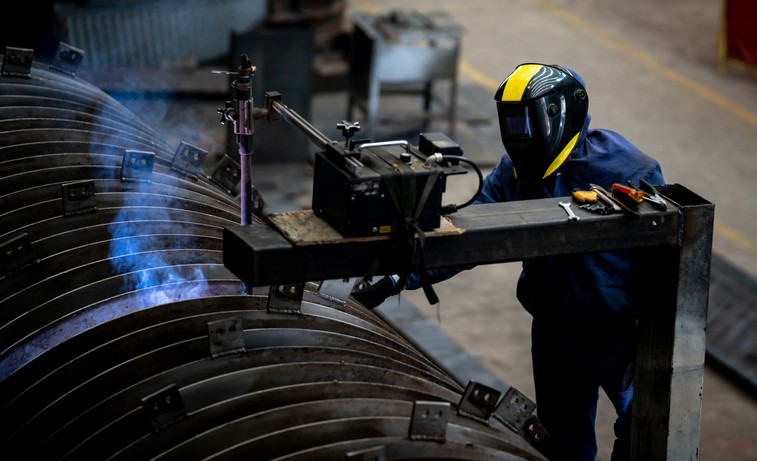Military fabrication significantly enhances the effectiveness and safety of our armed forces worldwide. It involves creating and producing various military-grade equipment, ranging from advanced weaponry to sophisticated vehicles and durable protective gear for soldiers.
The process, beginning with design and ending with the deployment of fully functional equipment and structures, requires meticulous attention to detail, as absolute precision effectively ensures the safety and efficiency of military personnel in the field.
This article will explore the various stages of military fabrication. We’ll detail the intricate steps that take innovative ideas from concept to reality, ultimately strengthening military personnel’s capabilities.
The Role of Military Fabrication
Military fabrication contributes to defense and security by ensuring armed forces are equipped with advanced and effective equipment, vehicles, and weaponry to protect national interests.
Defining Military Fabrication
Military fabrication refers to the manufacturing and production processes of creating defense equipment and vehicles specifically designed for military use. It encompasses various activities, including developing, prototyping, producing, and maintaining military hardware.
Benefits for Defense and Security
Military fabrication benefits nations in the following ways.
- Superiority in warfare to outperform potential adversaries.
- National defense capability, ensuring the armed forces are well-equipped to handle various scenarios
- Battlefield versatility, including adaptions, upgraded capabilities, and compatibility with other military systems.
- Deterrence to potential aggressors, preserving national security and stability.
The High Stakes Involved
In competing with other nations, countries must continually invest in research and development to keep their military capabilities superior. Military fabrication ensures their equipment remains cutting-edge in technology, innovation, and capabilities.
Furthermore, military fabrication safeguards the lives of military personnel. A lack of quality assurance or subpar fabrication could result in injuries or fatalities on the battlefield.
Design in Military Fabrication
The design phase ensures military equipment, from tanks to jet fighters, performs optimally and functions reliably in the most critical situations.
The Importance of Precision and Innovation in Design
The creation of the design provides the ideal time to infuse precision and innovation into military equipment. Precision ensures that each component fits perfectly and functions seamlessly in a complex system.
Likewise, innovation leverages technological advancements and incorporates cutting-edge ideas to create military gear that outperforms its predecessors.
Factors Impacting the Design Phase
New challenges arise regularly, and military equipment must continually evolve to meet and overcome these obstacles. The following elements support and fine-tune the design to perform under the most challenging conditions, ensuring the safety and success of military operations.
- Advanced design software and simulation tools enable engineers to visualize and evaluate the performance of their designs virtually before any physical production occurs.
- Collaboration between engineers and military experts ensures that military equipment is technologically advanced and aligned with specific operational needs.
Techniques Used in Military Fabrication
Military fabrication involves various methods that offer unique advantages in meeting the stringent requirements of military applications while presenting specific challenges.
Computer Numerical Control (CNC) Machining
This automated manufacturing process uses computerized controls to operate machine tools for fabricating complex and precise parts. CNC machines can precisely cut, drill, and shape metals, plastics, and composites to meet the demanding requirements of military applications.
CNC machining can repeatedly produce components with high-precision and tight tolerances. However, it has a steep initial setup cost and requires significant time to program and optimize the machines for specific parts.
Welding
Welding joins metal components together during construction and fabrication. It also provides strength and durability to withstand high-stress and extreme conditions.
However, welding requires skilled operators to mitigate the potential for distortion, heat-affected zones, and the limitations of joining materials with different melting points.
3D Printing
Revolutionizing the fabrication process, 3D Printing enables the efficient and customized creation of intricate designs and complex shapes that would be challenging or impossible to achieve using traditional methods.
However, it does have limited material diversity, slower production speed compared to conventional techniques, and the need for post-processing and quality control.
Composite Fabrication
The fabrication process for composites involves layering multiple sheets of prepreg material, applying heat and pressure, and curing the material to form a solid part. The advantages of composites include exceptional strength, resistance to corrosion, and the ability to design complex shapes.
Unfortunately, there are high costs associated with specialized equipment, the need for skilled technicians, and the potential for delamination or voids in the finished product.
The Rigorous Quality Control Standards Required
With absolutely no room for errors or compromises due to the lives of military personnel and the success of missions hanging in the balance, the reliability, safety, and effectiveness of military products rely on many stringent quality control measures.
- Standards developed by organizations such as the International Organization for Standardization (ISO) and the American Society for Testing and Materials (ASTM), among others, establish the best practices, manufacturing guidelines, and quality requirements that must be followed during the production process.
- Certifications from recognized bodies such as the National Quality Assurance (NQA) or the Defense Contract Management Agency (DCMA) demonstrate that the manufacturer adheres to the required quality standards and is committed to delivering products of the highest caliber.
- Regular audits ensure compliance with industry standards and certifications and involve thorough inspections of facilities, equipment, processes, and documentation.
Real-World Application of Military Fabrication
The M1 Abrams tank, renowned for its revolutionary design and exceptional performance, serves as a prime example of the impact of military fabrication.
- The design extensively included (CAD) tools to optimize the tank’s ergonomics, survivability, and firepower.
- The fabrication phase involved high-strength alloys, composite materials, and advanced welding techniques
- Quality control included non-destructive testing methods, such as ultrasonic and X-ray testing, and extensive performance testing
The Future of Military Fabrication and Its Technological Advancements
Military fabrication stands on the cusp of a technological revolution with the integration of artificial intelligence (AI), robotics, and new materials about to shape its future. AI has the potential to result in faster production cycles, reduced costs, and improved overall quality of military equipment.
At the same time, robotics can help eliminate human error, increase productivity, and perform dangerous tasks without risking human lives during manufacturing. And finally, developing new materials, such as advanced composite materials and nanomaterials, will offer enhanced strength, durability, and functionality in extreme conditions.
While these developments raise important ethical and security considerations, integrating AI, robotics, and new materials will undoubtedly enhance the capabilities and effectiveness of future military equipment.
Take Your Military Fabrication Projects to New Heights with NAMF
Are you looking for a partner that excels in the complex world of military fabrication? NAMF is your go-to expert. With our comprehensive experience in military-grade fabrication, from meticulous design to precise deployment, we ensure that every project meets the highest standards of quality and reliability.
Start Your Military Fabrication Journey with NAMF
Contact us today to explore how our state-of-the-art capabilities and unwavering commitment to excellence can enhance your military fabrication projects.
Let NAMF be your ally in navigating the demanding requirements of military-grade manufacturing.





